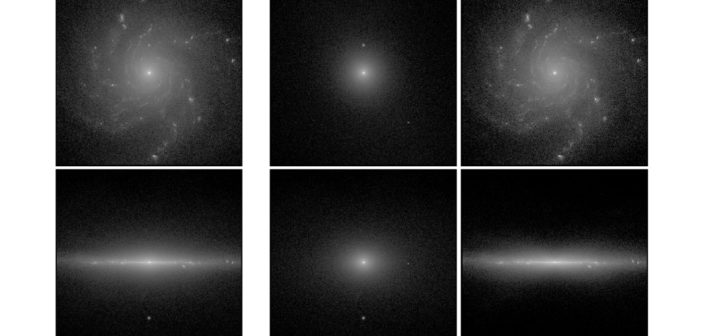What drives galaxies into different shapes and structures? To answer this question, we have to understand how the different components of galaxies form. In general, galaxies are made up of two main parts that form in different ways: a thin disk of stars, gas, and dust; and a thick spheroid of stars comprising a dense bulge and sparser halo. In a new study led by Min-Jung Park (Yonsei University, Republic of Korea), a team of scientists used a high-resolution cosmological simulation to explore these components of massive galaxies in more detail. In the image above, you’re seeing two views — face-on (top) and edge-on (bottom) — of a simulated massive, disk-dominated spiral galaxy. The left-most panels show the whole galaxy; the middle and right panels show the galaxy deconstructed into its spheroid (middle) and disk (right) components. By looking at these components separately, Park and collaborators are able to learn more about the processes that form these different parts of galaxies, shedding light on what causes galaxies’ final structures. To learn more about the authors’ conclusions, check out the article below.
Citation
“New Horizon: On the Origin of the Stellar Disk and Spheroid of Field Galaxies at z = 0.7,” Min-Jung Park et al 2019 ApJ 883 25. doi:10.3847/1538-4357/ab3afe

1 Comment
Pingback: Daily Log (2019-09-24) - Study Astrophysics